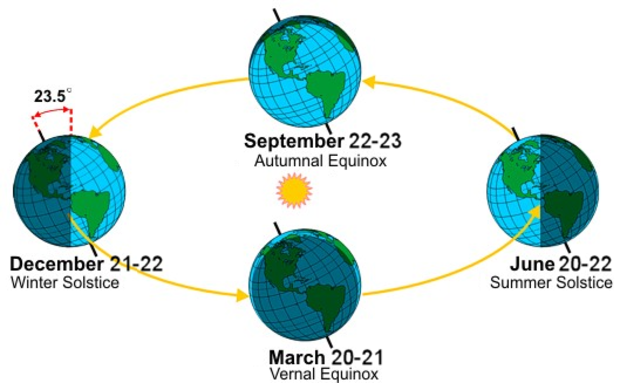Summer solstice: Here's what to know about the official start of summer, the longest day of the year
The summer solstice for 2023 is Wednesday, June 21. That's the day when the Northern Hemisphere sees the most daylight all year. It marks the astronomical start of summer. Astrologers and flowers celebrate, yogis hit Times Square and the Smithsonian extends its hours, but why does it happen?
Why is June 21 the longest day of the year?
The Earth rotates on a tilted axis. If you were to draw a line from the North Pole straight to the South Pole, it would stand at a 23.5-degree angle in relation to the sun. That means, as the Earth revolves around the sun, the North Pole will point toward the center of our solar system during certain points of the year and away from it at other points. The more the North Pole points toward the sun, the more daylight people in the Northern Hemisphere will have.
This year, the North Pole will be angled closest to the sun 10:58 a.m. Eastern Daylight Savings Time on June 21, according to the United States Navy. At that point, the sun will be directly over the Tropic of Cancer, situated 23.5 degrees north of the equator and running through Mexico, the Bahamas, Egypt, Saudi Arabia, India and southern China. People north of the equator will experience their longest day and shortest night of the year. People south of the equator will see the opposite. They're in the middle of winter with short days and long nights in June as the South Pole tilts away from the sun.
When is the shortest day of the year for the Northern Hemisphere?
That'd be the winter solstice, six months from now at 11:27 p.m. Eastern Standard Time on Dec. 21, 2023, again according to the United States Navy. At that time, the sun passes directly over the Tropic of Capricorn, which is located 23.5 degrees south of the equator and runs through Australia, Chile, southern Brazil and northern South Africa. On that day, people north of the equator will have their shortest day and longest night of the year.
What's the deal with equinoxes?
Twice a year, the angle of the Earth's axis sits so neither pole tilts toward the sun or away from it. According to the National Weather Service, on each equinox and for several days before and after them, daytime will range from about 12 hours and six and one-half minutes at the equator, to 12 hours and 8 minutes at 30 degrees latitude, to 12 hours and 16 minutes at 60 degrees latitude. This year, the Autumnal Equinox will be Sept. 23.
Fun facts about solstices and equinoxes
- The sun doesn't set north of the Arctic Circle between the Vernal Equinox and Autumnal Equinox, giving the area its nickname, "the land of the midnight sun."
- On the opposite end of the calendar, areas north of the Arctic Circle sit in darkness between the Autumnal Equinox and Vernal Equinox.
- The word solstice comes from the Latin words "sol," for sun, and "sistere," meaning "to stand still."
- The word equinox is derived from two Latin words - "aequus," meaning equal, and "nox," for night.




